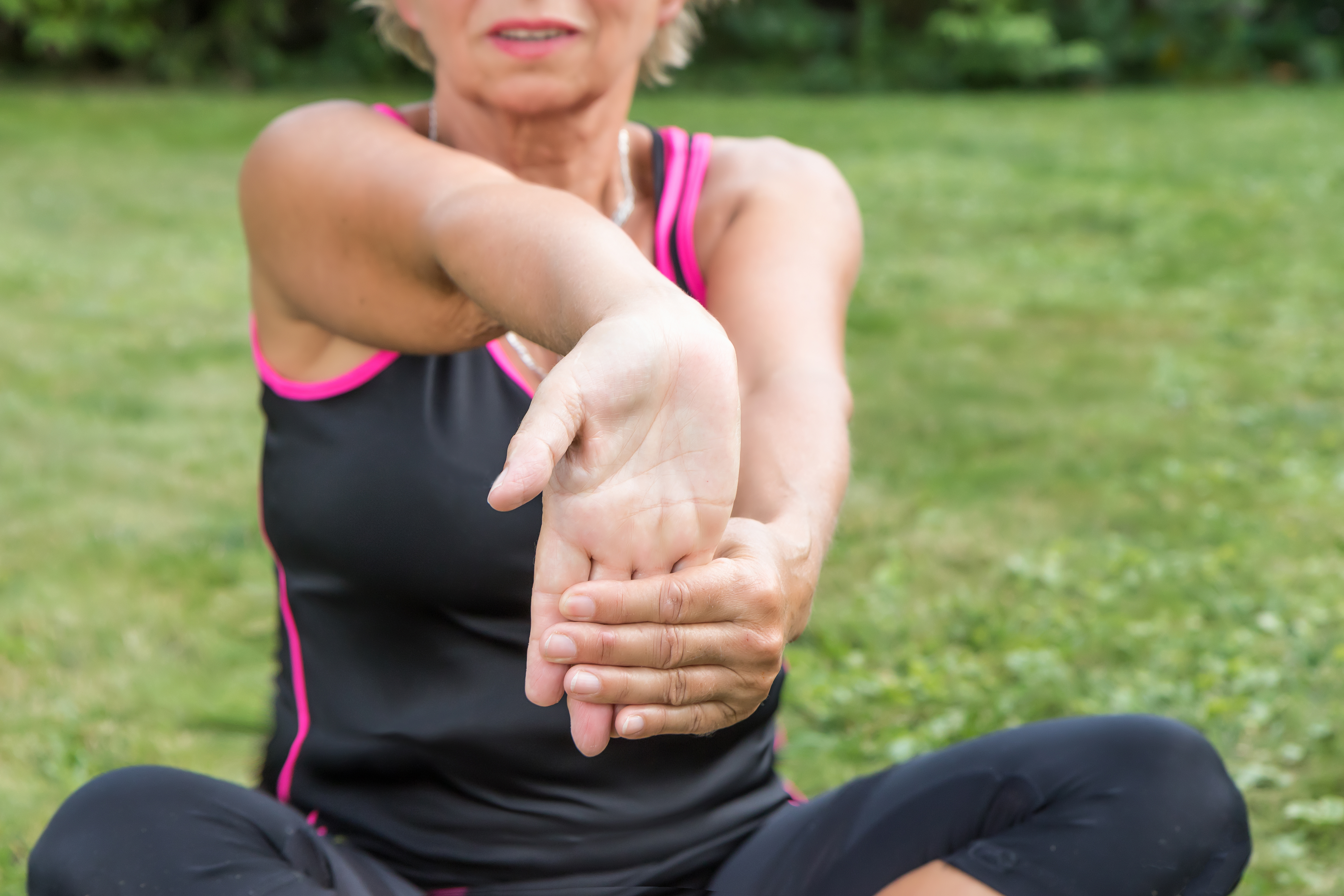
Range of Motion Exercises, or ROM exercises, are important movement patterns designed to regain mobility in a joint such as the shoulder, knee, wrist or fingers. Regularly moving your joints can help reduce pain, keep your joints flexible, and improve strength and balance. These exercises can also be designed for you by a physical or hand therapist; especially if you’ve suffered a joint injury, have experienced any pain in relation to movement, or underwent surgery.
Here are 5 range of motion exercises that you can do in the comfort of your own home!
Range of Motion Exercises You Can Do at Home
ROM exercises can be thought of as moving any joint in the body – the exercises can also be categorized as either “active” or “passive”.
Active motion is moving a joint using your own muscles. Example, “I bent my elbow actively, using my biceps muscle”.
Passive motion is moving a joint using your other hand to help or someone else pushing on the joint. For example, “I stretched my thumb passively across my palm, using my other hand to help. My therapist pushes harder than I push myself but I know I need it!”
Here are 5 active range of motion exercises, broken down by body part:
Neck
Gently bow your head and try to touch your chin to your chest. Raise your chin back to the starting position. Tilt your head back as far as possible so you are looking up at the ceiling. Return your head to the starting position.
Shoulder
Raise your arm to the side and then up over your head as far as possible. Return your arm to your side. Bring your arm across the front of your body and reach for the opposite shoulder. Return your arm to the starting position.
Elbow
With your palm facing forward, bend your elbow. Try to touch your shoulder with your fingertips. Return your arm to the starting position.
Wrist
Bend your hand back toward your wrist so that your fingers point toward the ceiling. Then bend your hand down so that your fingers point toward the floor.
Fingers
Open your hand and stretch the fingers as far apart as possible. Bring your fingers together again.
As always, consult a doctor first.
If you are experiencing pain or discomfort, either after a surgery or in general, it’s important that you discuss physical therapy with your doctor. While physical therapy is an excellent alternative to pain medication and has been proven to help speed up healing, you should always ensure that the exercises you are doing are okay for you and under the guidance of a licensed and certified therapist.
At Desert Hand and Physical Therapy, we have certified hand therapists and physical therapists on staff who could assess your physical condition and create a plan of healing and strength just for you. If you are interested in improving your flexibility and mobility with range of motion exercises, make an appointment with us today!
